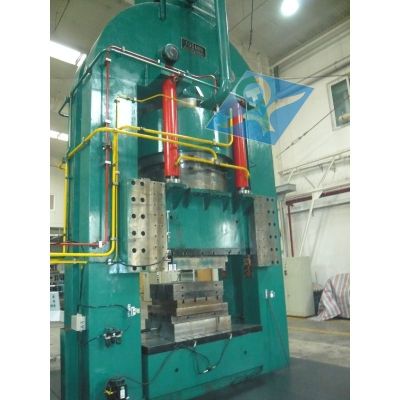How To Operate a Manual Hydraulic Press?
Hydraulic presses are versatile tools used in various industries for tasks ranging from molding to metal fabrication. Operating a manual hydraulic press requires precision and understanding of its components and functions. Here's a guide on how to effectively operate one:
Preparing the Workspace
Before starting, ensure the workspace is clean and free of any obstructions. Check the hydraulic press for any visible damage or leaks in the hydraulic system. It's crucial to wear appropriate personal protective equipment, including safety glasses and gloves, to prevent injury during operation.
Adjusting Pressure Settings
Begin by adjusting the pressure settings according to the specific requirements of the task at hand. Most manual hydraulic presses feature pressure adjustment mechanisms, such as pressure relief valves or pressure gauges. Consult the manufacturer's manual for guidance on setting the pressure correctly.
Positioning the Workpiece
Place the workpiece securely on the press bed, ensuring it is aligned with the center of the ram. Use clamps or fixtures to hold the workpiece in place, especially if it's prone to shifting during compression.
Engaging the Pump
Operate the pump lever or handle to engage the hydraulic system. This action will initiate the compression process by forcing hydraulic fluid into the cylinder, thereby exerting pressure on the ram.

Applying Pressure
Gradually apply pressure to the workpiece by pumping the hydraulic lever or handle. Monitor the pressure gauge to ensure it remains within the desired range. Avoid exceeding the maximum pressure capacity of the hydraulic press machine to prevent damage to the equipment or workpiece.
Monitoring Compression
As pressure is applied, keep a close eye on the workpiece for any signs of deformation or irregularities. Depending on the task, you may need to periodically release pressure to inspect the progress or make adjustments.
Releasing Pressure
Once the desired compression is achieved, release the pressure by activating the pressure release valve or retracting the hydraulic ram manually. Exercise caution when releasing pressure to prevent sudden movements or unexpected shifts in the workpiece.
Removing the Workpiece
Carefully remove the compressed workpiece from the press bed, taking care to avoid any sharp edges or protrusions. Inspect the finished product for quality and consistency before proceeding with further operations.
Shutting Down the Hydraulic Press
After completing the task, shut down the custom hydraulic press by releasing any remaining pressure and disengaging the pump. Clean the press bed and surrounding area to maintain a safe and organized workspace for future use.
Conclusion
Operating a manual hydraulic press equipment requires attention to detail and adherence to safety protocols. By following these guidelines, you can effectively utilize this powerful tool for a wide range of applications in manufacturing and fabrication processes.
- Previous: None
- Next: None

